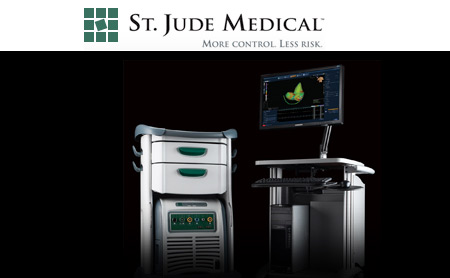Newly developed medical devices may aid in treating diseases and grave conditions. A latest device to be launched in the medical field is the next generation cardiac mapping system that has apparently been designed to assist physicians to more capably identify and guide therapy in treating abnormal heart rhythms. St. Jude Medical, Inc declared that the U.S. Food and Drug administration (FDA) has apparently approved and given its clearance to the launch of the EnSite Velocity Cardiac Mapping System.
The design of the EnSite Velocity System supposedly enhances procedural effectiveness and pace which may make it easier to use from set-up and operation to clinical application. With latest hardware and software, the system apparently provides easy set-up and connections. It also supposedly provides an intuitive software interface and contains two new key abilities namely the OneMap tool and RealReview function. The OneMap tool may allow physicians to form a comprehensive cardiac model and electrical map together via multiple catheters and electrodes. This could let doctors gather and exhibit more appropriate patient information in a short time.
The RealReview function apparently offers real-time, side-by-side views of the live process and formerly recorded part of the method. This feature may give physicians a swift and simple comparison of events and results at different times during the process, supposedly without losing the aptitude to picture and steer catheters in real-time. The EnSite Velocity System seems like an open platform device. It could be attuned with essentially all diagnostic and ablation catheters, recording systems and energy sources apparently used for ablation procedures.
Walid Saliba, M.D., of the Cleveland Clinic Foundation in Cleveland, Ohio, commented, “We have been using the EnSite System for nearly ten years because of its ability to display and map electrical signals from multiple catheters and electrodes, and its convenience of being an open platform. The next-generation EnSite Velocity System also allows us to treat patients with any arrhythmia and navigate the heart with potential reduction in procedural time.â€
The new EnSite Velocity System is supposedly the leading cardiac mapping system as it has preserved the company’s strengths and clinical utility. It may include vital improvements into the design. The device may also continue EnSite’s longstanding potential to decrease fluoroscopy exposure and may be the only mapping system that appears to be capable of supporting both contact and non-contact mapping, apparently giving the EnSite Velocity System unparalleled adaptability in its aptitude to map any arrhythmia.
Javier Sanchez, M.D., of the Texas Cardiac Arrhythmia Institute at St. David’s Medical Center in Austin, Texas, mentioned, “This system has exceptionally detailed chamber models and clear electroanatomical maps. Compared to other systems, I found the user interface to be very intuitive, quick and easy to learn.â€
Jane J. Song, president of the St. Jude Medical Atrial Fibrillation Division, mentioned, “St. Jude Medical has been dedicated to finding a cure for AF for more than 15 years. As the next generation in cardiac navigation and visualization technology, the EnSite Velocity System is another demonstration of our company’s commitment to continuous innovation in meeting the needs of electrophysiologists.â€
The EnSite Velocity System is apparently used in modestly persistent electrophysiology procedures. Catheters with electrodes may be included into a cardiac chamber. These electrodes may then be placed or envisaged by the system, which could record electrical information from the heart and apparently exhibit it in a three-dimensional anatomical model.
These highly meticulous anatomical models, or maps, supposedly allow physicians to diagnose and guide therapy for abnormal heart rhythms. Like preceding models of the EnSite System, the EnSite Velocity System may let catheter navigation to take place with reduced fluoroscopy, thereby decreasing possible danger related with too much contact to X-rays.
This next-generation cardiac mapping system should allow physicians to enhance the procedural efficiency and speed for treating irregular heart rhythms.

